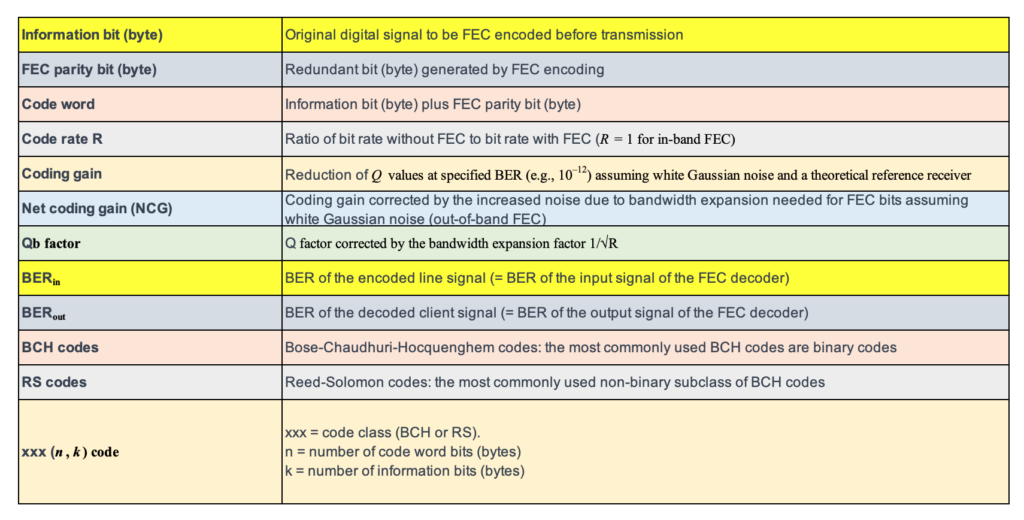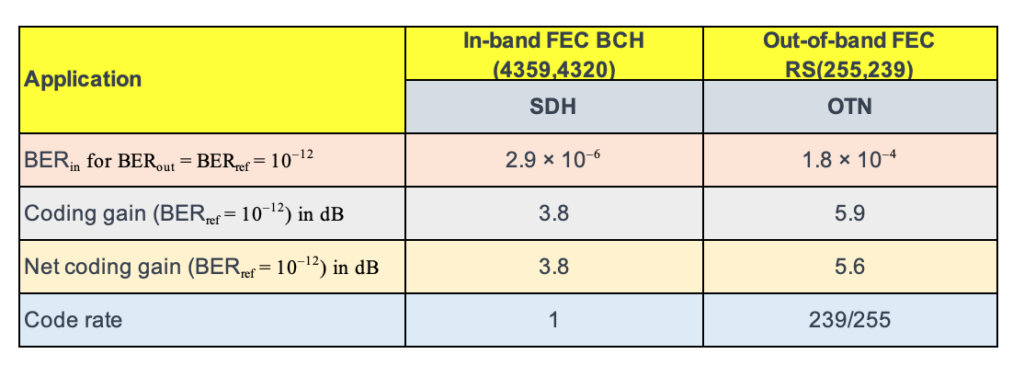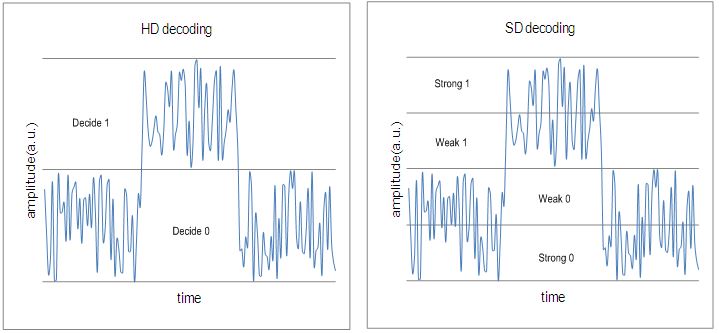In the pursuit of ever-greater data transmission capabilities, forward error correction (FEC) has emerged as a pivotal technology, not just in wireless communication but increasingly in large-capacity, long-haul optical systems. This blog post delves into the intricacies of FEC and its profound impact on the efficiency and cost-effectiveness of modern optical networks.
The Introduction of FEC in Optical Communications
FEC’s principle is simple yet powerful: by encoding the original digital signal with additional redundant bits, it can correct errors that occur during transmission. This technique enables optical transmission systems to tolerate much higher bit error ratios (BERs) than the traditional threshold of 10−1210−12 before decoding. Such resilience is revolutionizing system design, allowing the relaxation of optical parameters and fostering the development of vast, robust networks.
Defining FEC: A Glossary of Terms

Understanding FEC starts with grasping its key terminology. Here’s a brief rundown:
- Information bit (byte): The original digital signal that will be encoded using FEC before transmission.
- FEC parity bit (byte): Redundant data added to the original signal for error correction purposes.
- Code word: A combination of information and FEC parity bits.
- Code rate (R): The ratio of the original bit rate to the bit rate with FEC—indicative of the amount of redundancy added.
- Coding gain: The improvement in signal quality as a result of FEC, quantified by a reduction in Q values for a specified BER.
- Net coding gain (NCG): Coding gain adjusted for noise increase due to the additional bandwidth needed for FEC bits.
The Role of FEC in Optical Networks
The application of FEC allows for systems to operate with a BER that would have been unacceptable in the past, particularly in high-capacity, long-haul systems where the cumulative noise can significantly degrade signal quality. With FEC, these systems can achieve reliable performance even with the presence of amplified spontaneous emission (ASE) noise and other signal impairments.
In-Band vs. Out-of-Band FEC
There are two primary FEC schemes used in optical transmission: in-band and out-of-band FEC. In-band FEC, used in Synchronous Digital Hierarchy (SDH) systems, embeds FEC parity bits within the unused section overhead of SDH signals, thus not increasing the bit rate. In contrast, out-of-band FEC, as utilized in Optical Transport Networks (OTNs) and originally recommended for submarine systems, increases the line rate to accommodate FEC bits. ITU-T G.709 also introduces non-standard out-of-band FEC options optimized for higher efficiency.
Achieving Robustness Through FEC
The FEC schemes allow the correction of multiple bit errors, enhancing the robustness of the system. For example, a triple error-correcting binary BCH code can correct up to three bit errors in a 4359 bit code word, while an RS(255,239) code can correct up to eight byte errors per code word.

Performance of standard FECs
The Practical Impact of FEC
Implementing FEC leads to more forgiving system designs, where the requirement for pristine optical parameters is lessened. This, in turn, translates to reduced costs and complexity in constructing large-scale optical networks. The coding gains provided by FEC, especially when considered in terms of net coding gain, enable systems to better estimate and manage the OSNR, crucial for maintaining high-quality signal transmission.
Future Directions
While FEC has proven effective in OSNR-limited and dispersion-limited systems, its efficacy against phenomena like polarization mode dispersion (PMD) remains a topic for further research. Additionally, the interplay of FEC with non-linear effects in optical fibers, such as self-phase modulation and cross-phase modulation, presents a rich area for ongoing study.
Conclusion
FEC stands as a testament to the innovative spirit driving optical communications forward. By enabling systems to operate with higher BERs pre-decoding, FEC opens the door to more cost-effective, expansive, and resilient optical networks. As we look to the future, the continued evolution of FEC promises to underpin the next generation of optical transmission systems, making the dream of a hyper-connected world a reality.



